Pall颇尔滤膜 FS013K10 UHMWPE CELL W/3-GAUGE PKG 6448 51586
日度归档:2024年7月17日
Whatman 滤膜 7195-002 NC 硝酸纤维素, 白色平滑, 5m 25mm 100/盒
Whatman 滤膜 7195-002 NC 硝酸纤维素, 白色平滑, 5m 25mm 100/盒 WCN WH 25MM 5.0uM 100/PK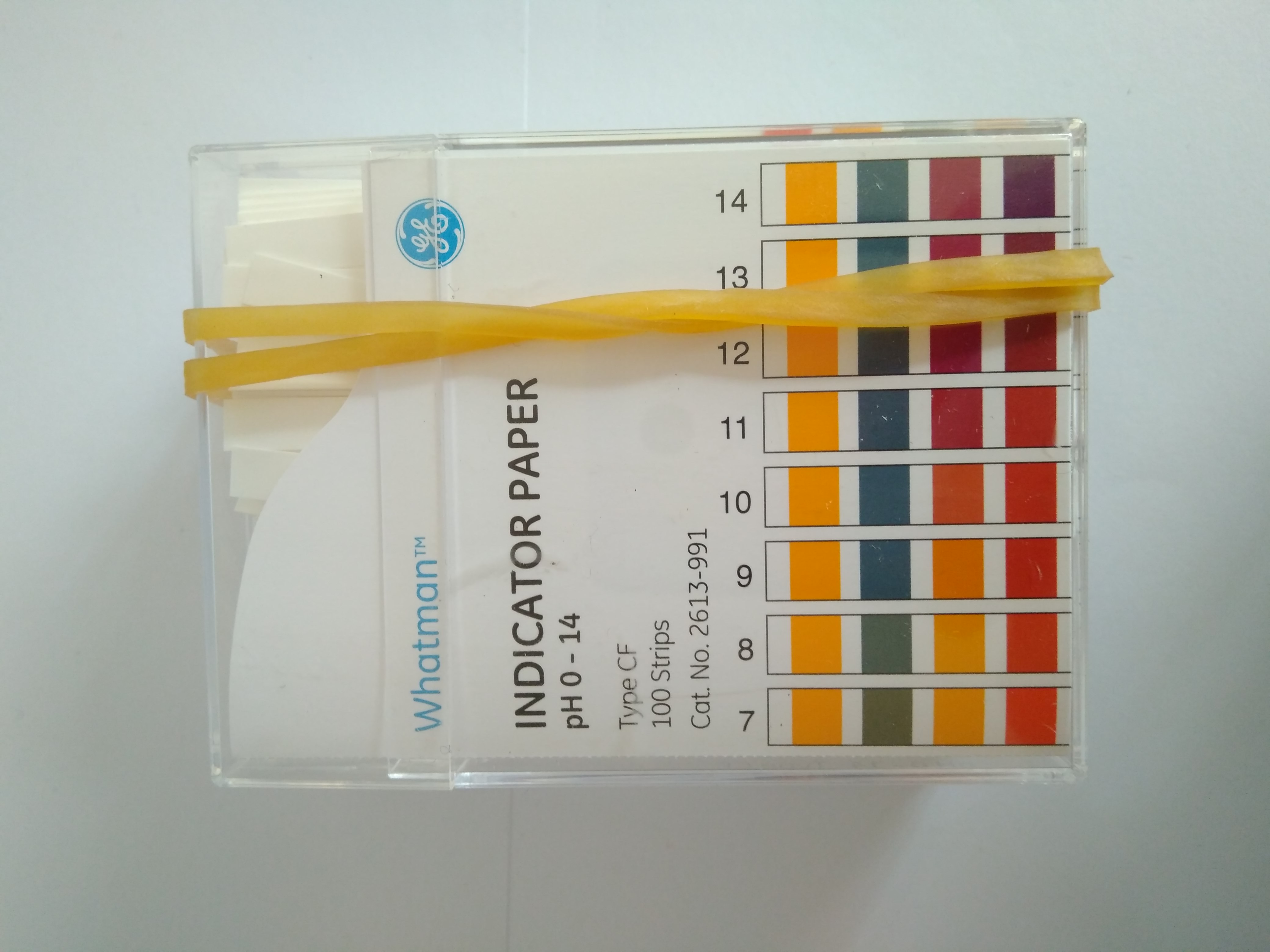
冷却墨盒CP – 1000用|柴田科技有限公司-环境检测设备、科学仪器的制造销售
产品详细
冷却墨盒CP – 1000用
商品代码其他情报(式样)
| |
||
|---|---|---|
上海金畔生物科技有限公司
-27449%2F%3Fc%3D34& ” -27449%2F%3Fc%3D34&
荧光染料41770 Alkyne hydrazide 25 mg
lumiprobe荧光染料41770 Alkyne hydrazide 25 mg lumiprobe荧光染料炔基 酰肼 25 mg 95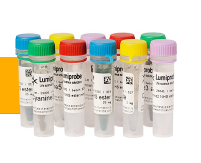
康宁corning 3290 FLASK,75CM2,CellBIND(R) Surfac 培养瓶 75cm 透气盖 BIND表面 灭菌 5个/包
康宁corning 3290 FLASK,75CM2,CellBIND(R) Surfac
培养瓶 75cm 透气盖 BIND表面 灭菌 5个/包 20包/箱 2380.26
康宁corning 430852 RB,1700CM,EASY GRIP,PS,S,BK,2/ 滚瓶 1700cm2 易握盖,PS(聚苯乙烯)材质 有刻度 灭菌 大包装 2个/包
康宁corning 430852 RB,1700CM,EASY GRIP,PS,S,BK,2/
滚瓶 1700cm2 易握盖,PS(聚苯乙烯)材质 有刻度 灭菌 大包装 2个/包 20包/箱 3478.13
NUNC 355501 CRYOTUBE COOLER LABTOP Nunc-20℃Labtop便携式冰盒
NUNC 355501 CRYOTUBE COOLER LABTOP Nunc-20℃Labtop便携式冰盒
OECD培养基,浓缩液Ⅰ~Ⅳ
| 产品编号 | 产品名称 | 产品规格 | 产品等级 | 产品价格 |
| 158-03315 | OECD Medium, Stock Solution OECD培养基, 浓缩液 |
500mL | 植物培养用 | – |
| 153-03321 | OECD培地, 浓縮液Ⅱ(×1,000) | 50mL | 植物培养用 | – |
| 150-03331 | OECD培地, 浓縮液Ⅲ(×1,000) | 50mL | 植物培养用 | – |
| 157-03341 | OECD培地, 浓縮液Ⅳ(×1,000) | 50mL | 植物培养用 | – |
 OECD培养基, 浓缩液Ⅰ~Ⅳ
OECD培养基, 浓缩液Ⅰ~Ⅳ
利用淡水藻类进行抑制生长试验
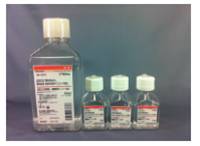
WET(Whole Effluent Toxicity)是由美国研发的利用生物应答的水环境管理方法。本产品是WET法之一“淡水藻类生长抑制试验”的培养基配制用浓缩液。通过混合、稀释本产品,可以根据OECD TEST GUIDELINE No.201配制培养基。
◆OECD 培养基, 浓缩液Ⅰ~Ⅳ成分表
|
产品编号 |
规格 |
成分 |
浓度(mg/L) (原液) |
浓度(mg/L) (稀释后) |
|---|---|---|---|---|
|
158-03315 |
500 mL |
OECD Medium, |
×100 |
×1 |
|
NH4Cl |
1,500.00 |
15.0000 |
||
|
MgCl2, 6H2O |
1,200.00 |
12.0000 |
||
|
CaCl2, 2H2O |
1,800.00 |
18.0000 |
||
|
MgSO4, 7H2O |
1,500.00 |
15.0000 |
||
|
KH2PO4 |
160.00 |
1.6000 |
||
|
153-03321 |
50 mL |
OECD Medium, |
×1,000 |
×1 |
|
FeCl3, 6H2O |
64.00 |
0.0640 |
||
|
EDTA-Na2, 2H2O |
100.00 |
0.1000 |
||
|
150-03331 |
50 mL |
OECD Medium, |
×1,000 |
×1 |
|
H3BO3 |
185.00 |
0.1850 |
||
|
MnCl2, 4H2O |
415.00 |
0.4150 |
||
|
ZnCl2 |
3.00 |
0.0030 |
||
|
CoCl2, 6H2O |
1.50 |
0.0015 |
||
|
CuCl2, 2H2O |
0.01 |
0.00001 |
||
|
Na2MoO4,2H2O |
7.00 |
0.0070 |
||
|
157-03341 |
50 mL |
OECD Medium, |
×1,000 |
×1 |
|
NaHCO3 |
50,000.00 |
50.0000 |
◆特点
● 无需称量、溶解
● 已通过支原体实验
● 已进行0.2μm过滤灭菌
● 根据OECD Guideline No.201组成
◆OECD培养基的配制方法
通过将OECD培养基、浓缩液Ⅰ~Ⅳ混合、稀释,根据OECD TEST GUIDELINE No.201进行OECD培养基的配制。
配置1L的OECD培养基时
|
产品名称 |
需要量 |
|---|---|
|
OECD培养基, 浓缩液Ⅰ(×100) |
10 mL |
|
OECD培养基, 浓缩液Ⅱ(×1,000) |
1 mL |
|
OECD培养基, 浓缩液Ⅲ(×1,000) |
1 mL |
|
OECD培养基, 浓缩液Ⅳ(×1,000) |
1 mL |
|
混合各浓缩液的需要量,稀释至1L |
|
|
产品编号 |
产品名称 |
级别/厂家 |
规格 |
|---|---|---|---|
|
162-03652 |
Potassium Dichromate |
试药特级 |
25 g |
|
196-15645 |
Sterile Water, Endotoxin Free |
细胞培养 |
500 mL |
|
316-90101 |
Distilled Water, Deionized, Sterile |
Nippongene |
100 mL |
|
312-90103 |
100 mL×6 |
||
|
318-90105 |
500 mL |
||
|
012-11872 |
Agar (Powder) |
植物培养 |
25 g |
|
016-11875 |
500 g |
农残前处理柱(短柱)
| 产品编号 | 产品名称 | 产品规格 | 产品等级 | 产品价格 |
| 296-32651 | Presep® -C Agri (Short) 农残前处理柱(短柱) |
10 pcs×5 | for Sample Pretreatment |

农残前处理柱(短柱)
Presep® -C Agri (Short)
该固相萃取柱使用凝胶树脂(Styrene Divinylbenzene-Methacrylate)作为吸附材料,可迅速简便地进行农药残留分析的前处理。
◆特点
1、亲水性及疏水性聚合物凝胶可吸附水中存在的微量疏水性成分。
2、对难以回收的高极性及金属配位成分(Asulam•Oxine copper等)也具有极高的回收率。
3、使用柱处理器spe(减压浓缩装置),可在50分钟以内同时处理24个样本。还可使用
Presep®-C Agri (Short),利用加压式定流泵进行回收、浓缩处理。
4、进行HPLC分析时,与Wakopak® WS Agri-9及专用洗提液组合使用,可迅速简便定量分析多种
符合日本公定法规定的农药。
5、进行GC分析时,使用SGE公司的毛细管色谱柱,可进行选择性更高的分析。
◆Presep®-C Agri(Short)的回收率探讨(GC-MS分析条件)
固相萃取条件
色谱柱:Presep® -C Agri(Short)
柱活化:二氯甲烷5Ml,甲醇5mL,蒸馏水5mL
水样:在200mL蒸馏水中添加标准液100uL
固相吸附:以10-20mL/min的流速向柱进样
脱水:对柱通气10分钟
洗脱、脱水:将两个Presep®-C Na2SO4萃取柱连接至固相柱前端,用2.5mL二氯甲烷洗脱。
然后拆下Presep®-C Agri(Short)后,用6mL二氯甲烷清洗Na2SO4柱,再与洗脱液混合。
浓缩:加入2mL己烷,吹氮浓缩至0.8mL (不得吹干)
分析样品:加入内标液100uL,用己烷定容至1mL(在分析结束前需冷藏保存)
标准液:10ug/mL丙酮溶液
内标液:萘嵌戊烷,苯并菲,2ug/mL己烷溶液为调整GC/MS分析中得灵敏度变化而添加
两个Presep® -C Na2SO4脱水柱连接好后,用10mL二氯甲烷清洗后再使用。
GC分析条件
GC:HP5890 PACKARD SERIESE
GC/MS:AUTO mass JMS-AM150型(JEOL)
Column:100%Dimethyl Polysiloxane,0.25mm*30m,膜厚0.25um
Injector:250℃
升温:60℃(2min)-120℃(20℃/min)-300℃(10℃/min)-300℃(5min)
进样量:2.0uL
Axygen试剂盒 AP-MN-MiRNA-50G AxyPrep miRNA小量制备试剂盒
Axygen试剂盒 AP-MN-MiRNA-50G AxyPrep miRNA小量制备试剂盒 50 prep 盒 1050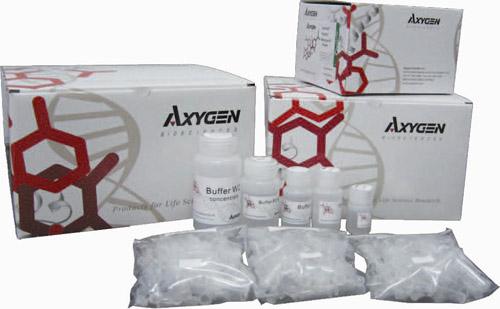
Axygen试剂盒 AP-E96-P-1G AxyPrep Easy-96质粒DNA小量试剂盒
Axygen试剂盒 AP-E96-P-1G AxyPrep Easy-96质粒DNA小量试剂盒 1×96 prep 盒 321
Whatman 滤膜 7184-014 NC 硝酸纤维素, 白色平滑, 0.45m 142mm 25/盒
Whatman 滤膜 7184-014 NC 硝酸纤维素, 白色平滑, 0.45m 142mm 25/盒 WCN WH 142MM 0.45uM 25/PK
wako胡萝卜素标准品
wako胡萝卜素标准品
| 品牌 | 产品编号 | 产品名称 | 等级 | 规格 | 零售价(RMB) | CAS No. |
| (生产商编号) | ||||||
| Wako | 209-17281 | Thapsigargin | for Cellbiology | 1 mg | 1350 | 67526-95-8 |
| 毒胡萝卜素 | ||||||
| Wako | 205-17283 | Thapsigargin | for Cellbiology | 5 mg | 5390 | 67526-95-8 |
| 毒胡萝卜素 | ||||||
| Wako | 035-05531 | β-Carotene | Wako Special Grade | 1g | 400 | 7235-40-7 |
| β-胡萝卜素 | ||||||
| Wako | 031-05533 | β-Carotene | Wako Special Grade | 10g | 860 | 7235-40-7 |
| β-胡萝卜素 | ||||||
| Biomol | BML-PE180-0005 | Thapsigargin | – | 5mg | 3840 | 67526-95-8 |
| 毒胡萝卜素 | ||||||
| Alexis | ALX-460-004-G005 | β-Carotene | – | 5g | 810 | 7235-40-7 |
| β-胡萝卜素 | ||||||
| AdipoGen | AG-CN2-0003-M010 | Thapsigargin (high purity) | – | 10 mg | 5530 | 67526-95-8 |
| 毒胡萝卜素 | ||||||
| AdipoGen | AG-CN2-0003-M005 | Thapsigargin (high purity) | – | 5 mg | 3220 | 67526-95-8 |
| 毒胡萝卜素 | ||||||
| AdipoGen | AG-CN2-0003-M001 | Thapsigargin (high purity) | – | 1 mg | 810 | 67526-95-8 |
| 毒胡萝卜素 | ||||||
| Wako | 035-17981 | α-Carotene Standard | for High Performance
Liquid Chromatography |
10mg | 2860 | 7488-99-5 |
| α-胡萝卜素标准品 | ||||||
| Wako | 032-17991 | β-Carotene Standard | for High Performance
Liquid Chromatography |
10mg | 920 | 7235-40-7 |
| β-胡萝卜素标准品 |
D-甘露糖/D-果糖/D-葡萄糖检测试剂盒 D-Mannose/D-Fructose/D-Glucose Assay kit 货号:K-MANGL Megazyme中文站
D-甘露糖/D-果糖/D-葡萄糖检测试剂盒
英文名:D-Mannose/D-Fructose/D-Glucose Assay kit
货号:K-MANGL
规格:55 assays per kit
The D-Mannose/D-Fructose/D-Glucose test kit is suitable for the specific measurement and analysis of D-mannose, D-fructose and D-glucose in plant products and in acid hydrolysates of polysaccharides.
UV-method for the determination of D-Mannose, D-Fructose
and D-Glucosein foodstuffs, yeast cell preparations and
other materials
Principle:
(hexokinase)
(1) D-Mannose / D-fructose / D-glucose + ATP →
M-6-P / F-6-P / G-6-P + ADP
(glucose-6-phosphate dehydrogenase)
(2) G-6-P + NADP+ → gluconate-6-phosphate + NADPH + H+
(phosphomannose isomerase) (phosphoglucose isomerase)
(3) M-6-P ↔ F-6-P ↔ G-6-P
Kit size: 55 assays
Method: Spectrophotometric at 340 nm
Reaction time: ~ 30 min
Detection limit: 0.7 mg/L
Application examples:
Foodstuffs, yeast cell preparations, enzymatic hydrolysates and other
materials (e.g. biological cultures, samples, etc.)
Method recognition: Novel method
Advantages
- Very competitive price (cost per test)
- All reagents stable for > 2 years after preparation
- Only enzymatic kit available
- Simple format
- Rapid reaction
- Mega-Calc™ software tool is available from our website for hassle-free raw data processing
- Standard included
Q1. Sometimes a negative absorbance change is obtained for the blank samples, is this normal? Should the real value (negative absorbance change) or “0” be used in the calculation of results?
Sometimes the addition of the last assay component can cause a small negative absorbance change in the blank samples due to a dilution effect and in such cases it is recommended that the real absorbance values be used in the calculation of results.
Q2. Should the pH of the sample be adjusted even for samples in acidic media?
The pH of the assay solution after the sample is added should be the same as that of the assay buffer that is supplied with the kit.
Low sample volumes (e.g. 0.1 mL) are not likely to affect the pH of the assay solution and therefore may not require pH adjustment.
Samples above 0.1 mL are more likely to affect the pH of the assay solution and therefore the pH of these samples should be adjusted as described in the data booklet, prior to addition to the assay.
Q3. There is an issue with the performance of the kit; the results are not as expected.
If you suspect that the Megazyme test kit is not performing as expected such that expected results are not obtained please do the following:
- Ensure that you have tested the standard sample that is supplied with the Megazyme test kit.
- Send the results of the kit standard, blank samples and the results obtained for your sample, in the relevant MegaCalc spreadsheet (if available) to Megazyme (cs@megazyme.com). Where available the relevant MegaCalc spreadsheet can be downloaded from where the product appears on the Megazyme website.
- State the kit lot number being used (this is found on the outside of the kit box).
- State which assay format was used (refer to the relevant page in the kit booklet if necessary).
- State exact details of any modifications to the standard procedure that is provided by Megazyme.
- State the sample type and describe the sample preparation steps if applicable.
Q4. How can I work out how much sample to extract and what dilution of my sample should be used in the kit assay?
Where the amount of analyte in a liquid sample is unknown, it is recommended that a range of sample dilutions are prepared with the aim of obtaining an absorbance change in the assay that is within the linear range.
Where solid samples are analysed, the weight of sample per volume of water used for sample extraction/preparation can be altered to suit, as can the dilution of the extracted sample prior to the addition of the assay, as per liquid samples.
Q5. Can the sensitivity of the kit assay be increased?
For samples with low concentrations of analyte the sample volume used in the kit assay can be increased to increase sensitivity. When doing this the water volume is adjusted to retain the same final assay volume. This is critical for the manual assay format because the assay volume and sample volume are used in the calculation of results.
Q6. I have some doubts about the appearance/quality of a kit component what should be done?
If there are any concerns with any kit components, the first thing to do is to test the standard sample (control sample) that is supplied with the kit and ensure that the expected value (within the accepted variation) is obtained before testing any precious samples. This must be done using the procedure provided in the kit booklet without any modifications to the procedure. If there are still doubts about the results using the standard sample in the kit then send example results in the MegaCalc spread sheet to your product supplier (Megazyme or your local Megazyme distributor).
Q7. How much sample should be used for the clarification/extraction of my sample?
The volume/weight of sample and total volume of the extract can be modified to suit the sample. This will ultimately be dictated by the amount of analyte of interest in the sample and may require empirical determination. For low levels of analyte the sample:extract volume ratio can be increased (i.e. increase the sample and/or decrease the total extraction volume).
Alternatively, for samples with low concentrations of analyte, a larger sample volume can be added to the kit assay. When altering the sample volume adjust the distilled water volume added to the assay accordingly so that the total assay volume is not altered.
Q8. Can the manual assay format be scaled down to a 96-well microplate format?
The majority of the Megazyme test kits are developed to work in cuvettes using the manual assay format, however the assay can be converted for use in a 96-well microplate format. To do this the assay volumes for the manual cuvette format are reduced by 10-fold. The calculation of results for the manual assay format uses a 1 cm path-length, however the path-length in the microplate is not 1 cm and therefore the MegaCalc spreadsheet or the calculation provided in the kit booklet for the manual format cannot be used for the micropalate format unless the microplate reader being used can.
There a 3 main methods for calculation of results using the microplate format:
- The easiest method is to use a microplate reader that has a path-length conversion capability (i.e. the microplater reader can detect the path-length of each well and convert the individual readings to a 1 cm path-length). This will allow values to be calculated using the MegaCalc calculation software which can be found where the product is located on the Megazyme website.
- Perform a standard curve of the analyte on each microplate that contains test samples and calculate the result of the test samples from the calibration curve (concentration of analyte versus absorbance).
- Perform a standard curve of the analyte in both the cuvette format (i.e. with a 1 cm path-length) and the 96-well microplate format and use these results to obtain a mean conversion factor between the cuvette values and the microplate values. Subsequent assays in the microplate format can then be converted from the calculated conversion factor.
Q9. Can the test kit be used to measure biological fluids and what sample preparation method should be used?
The kit assay may work for biological fluids assuming that inositol is present above the limit of detection for the kit after any sample preparation (if required). Centrifugation of the samples and use of the supernatant directly in the kit assay (with appropriate dilution in distilled water) may be sufficient. However, if required a more stringent sample preparation method may be required and examples are provided at the following link:http://www.megazyme.com/docs/analytical-applications-downloads/biological_samples_111109.pdf?sfvrsn=2
The test kit has not been tested using biological fluids as samples because it is not marketed or registered as a medical device. This will therefore require your own validation.
Q10. When using this kit for quantitative analysis what level of accuracy and repeatability can be expected?
The test kit is extremely accurate – at Megazyme the quality control criteria for accuracy and repeatability is to be within 2% of the expected value using pure analytes.
However, the level of accuracy is obviously analyst and sample dependent.
Q11. Must the minimum absorbance change for a sample always be at least 0.1?
No. The 0.1 change of absorbance is only a recommendation. The lowest acceptable change in absorbance can is dictated by the analyst and equipment (i.e. pipettes and spectrophotometer) and therefore can be can be determined by the user. With accurate pipetting, absorbance changes as low as 0.02 can be used accurately.
If a change in absorbance above 0.1 is required but cannot be achieved due to low concentrations of analyte in a sample, this can be overcome by using a larger sample volume in the assay to increase the absorbance change and thereby increase sensitivity of the assay. When doing this the increased volume of the sample should be subtracted from the distilled water volume that is added to the assay so that the total assay volume is unaltered. The increase sample volume should also be accounted for when calculating final results.
Q12. Can the sensitivity of the kit assay be increased?
Yes. Samples with the lower concentrations of analyte will generate a lower absorbance change. For samples with low concentrations of analyte, a larger sample volume can be used in the assay to increase the absorbance change and thereby increase sensitivity of the assay. When doing this the increased volume of the sample should be subtracted from the distilled water volume that is added to the assay so that the total assay volume is unaltered. The increase sample volume should also be accounted for when calculating final results.
Q13. Must the minimum absorbance change for a sample always be at least 0.1?
No. The 0.1 change of absorbance is only a recommendation. The lowest acceptable change in absorbance can is dictated by the analyst and equipment (i.e. pipettes and spectrophotometer) and therefore can be can be determined by the user. With accurate pipetting, absorbance changes as low as 0.02 can be used accurately.
If a change in absorbance above 0.1 is required but cannot be achieved due to low concentrations of analyte in a sample, this can be overcome by using a larger sample volume in the assay to increase the absorbance change and thereby increase sensitivity of the assay. When doing this the increased volume of the sample should be subtracted from the distilled water volume that is added to the assay so that the total assay volume is unaltered. The increase sample volume should also be accounted for when calculating final results.
日本天野酶制品株式会社-特种酶制品 脂肪酶 蛋白酶 淀粉酶
日本天野酶试剂代理商 日本天野酶试剂官网
日本天野酶制品株式会社-特种酶制品 脂肪酶 蛋白酶 淀粉酶
日本天野酶制品株式会社上海代表处
日本天野酶制品株式会社-产品展示
日本天野酶制品株式会社-特种酶制品
日本天野酶制品株式会社
上海金畔生物科技有限公司是一家销售天野酶制品的中国代理公司。
日本天野酶代理商 日本Amano酶代理商
日本天野酶制品株式会社 日本天野酶代理商Amano酶代理商
固话总机:021-50837765
订货热线:15221999938
qq号:2743691513 1042640511
微信号:jinpanbio
网 址: www.jinpanbio.com
金畔博客:www.jinpanbio.cn
康宁corning 431132 RB CAP,EASY GRIP VENT CAP,S,IN 滚瓶盖 48mm直径 易握透气盖 灭菌 单个包装(cf 430698//431132) 1个/包
康宁corning 431132 RB CAP,EASY GRIP VENT CAP,S,IN
滚瓶盖 48mm直径 易握透气盖 灭菌 单个包装(cf 430698//431132) 1个/包 300包/箱 6298.36
Amresco 0227-5KG SODIUM DODECYL SULFATE 十二烷基硫酸钠
Amresco 0227-5KG SODIUM DODECYL SULFATE 十二烷基硫酸钠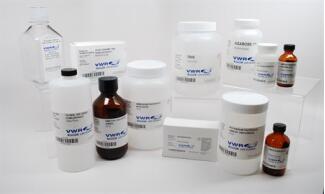
肌环己六氢醇脱氢酶(枯草芽孢杆菌) myo-Inositol dehydrogenase (Bacillus subtilis) 货号:E-INDHBS Megazyme中文站
肌环己六氢醇脱氢酶(枯草芽孢杆菌)
英文名:myo-Inositol dehydrogenase (Bacillus subtilis)
货号:E-INDHBS
规格:500 Units
High purity recombinant myo-Inositol dehydrogenase (B. subtilis) for use in research, biochemical enzyme assays and
in vitro diagnostic analysis.
EC 1.1.1.18
Inositol 2-dehydrogenase; myo-Inositol : NAD+ 2-oxidoreductase.
Recombinant from B. subtilis.
In 3.2 M ammonium sulphate.
Specific activity: ~ 50 U/mg (25oC, pH 9.6, myo-inositol).
Stable at 4oC for > 2 years.
暂无问题解答
暂无视频
康宁corning 430591 DISH,100X20MM,NT,PS,S,BK,20/50 20/包
康宁corning 430591 DISH,100X20MM,NT,PS,S,BK,20/50 20/包 25包/箱 2982.16
Amresco 0481-25G 2′-DEOXYTHYMIDINE 2’-脱氧胸苷
Amresco 0481-25G 2′-DEOXYTHYMIDINE 2’-脱氧胸苷
手消毒液|生命科学/临床检验药|关东化学株式会社
该文章由WP-AutoPost插件自动采集发布
Pall颇尔滤膜 66560 A/E GLASS FIBER 293MM PK25
Pall颇尔滤膜 66560 A/E GLASS FIBER 293MM PK25 215 1721
日本SIBATA柴田科学官网 日本柴田中国代理
欢迎访问SIBATA/日本柴田科学代理 上海金畔生物科技有限公司
欢迎访问日本SIBATA/日本柴田科学官网 环境检测仪器中国代理
欢迎访问日本SIBATA柴田科学官网 日本柴田中国代理
柴田科学株式会社 – 環境測定機器・科学機器の製造販売
SIBATA/日本柴田科学生产・销售环境测量设备、通用科学设备、理化玻璃器具、化学设备装置、环境试验装置、动物实验装置(涉及商品数量8,000品种,70% 自行生产、30% 商品销售)
欢迎访问日本柴田SIBATA/日本柴田科学官网 环境检测仪器中国代理
日本柴田环境检测仪器 实验室分析仪器 日本恒温槽_科学恒温槽
欢迎访问SIBATA/日本柴田科学官网 中国代理
https://www.sibata.co.jp/
SIBATA/日本柴田科学 中国代理
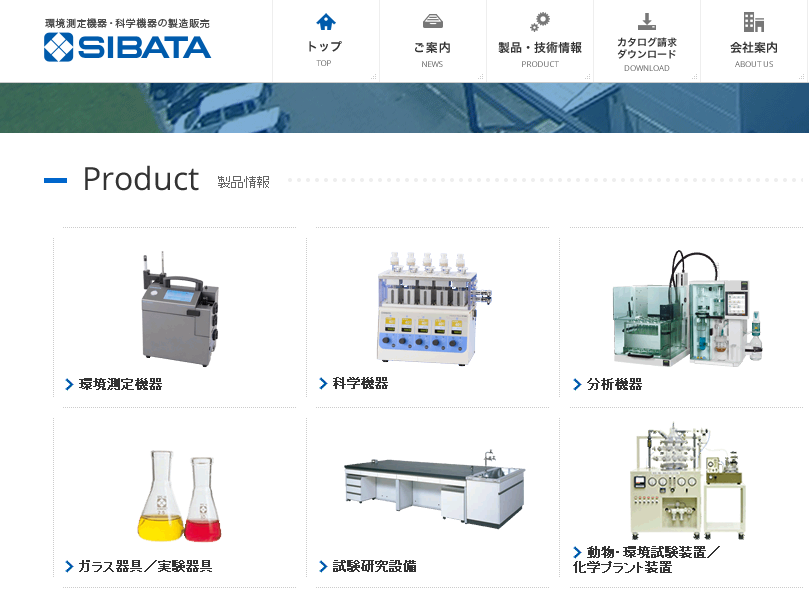

SIBATA/日本柴田科学官方代理 上海金畔生物科技有限公司
欢迎访问日本柴田SIBATA官网 日本柴田SIBATA中国代理
日本柴田SIBATA代理
日本柴田SIBATA科学仪器代理商
 采样泵(5 to 40 L/min.) 用基准流量计 “FC-L1”
采样泵(5 to 40 L/min.) 用基准流量计 “FC-L1” 采样泵(0.05 to 5 L/min.) 用基准流量计 “FC-M1”
采样泵(0.05 to 5 L/min.) 用基准流量计 “FC-M1” 微型泵 “MP-W5P型”
微型泵 “MP-W5P型” 低流量泵 “LV-40BW型”
低流量泵 “LV-40BW型”
 便携式高流量空气采样仪 “HV-500R 系列”
便携式高流量空气采样仪 “HV-500R 系列” 高流量空气采样仪 “HV-RW型”
高流量空气采样仪 “HV-RW型” 数码孔板流量仪 “OFD-1型”
数码孔板流量仪 “OFD-1型” 数字粉尘仪 “LD-5R”/ PM2.5 数字粉尘仪 “LD-5R”
数字粉尘仪 “LD-5R”/ PM2.5 数字粉尘仪 “LD-5R”
 户外用粉尘监视器 “FLD-1型”
户外用粉尘监视器 “FLD-1型” 劳研式口罩密合度测试仪 “MT-05型”
劳研式口罩密合度测试仪 “MT-05型” “DPD法” 余氯测定仪
“DPD法” 余氯测定仪
日本柴田环境检测仪器代理商 高流量空气采样仪 数字粉尘仪
SIBATA/日本柴田科学代理 上海金畔生物科技有限公司
日本SIBATA/日本柴田科学官网 环境检测仪器中国代理
日本SIBATA柴田科学官网 日本柴田中国代理
柴田科学株式会社 – 環境測定機器・科学機器の製造販売
SIBATA/日本柴田科学生产・销售环境测量设备、通用科学设备、理化玻璃器具、化学设备装置、环境试验装置、动物实验装置(涉及商品数量8,000品种,70% 自行生产、30% 商品销售)
日本柴田SIBATA/日本柴田科学官网 环境检测仪器中国代理
日本柴田环境检测仪器 实验室分析仪器 日本恒温槽_科学恒温槽
SIBATA/日本柴田科学官网 中国代理
SIBATA/日本柴田科学 中国代理


SIBATA/日本柴田科学代理 上海金畔生物科技有限公司
日本柴田SIBATA官网 日本柴田SIBATA中国代理
日本柴田SIBATA代理商
日本柴田SIBATA科学仪器授权代理商
 采样泵(5 to 40 L/min.) 用基准流量计 “FC-L1”
采样泵(5 to 40 L/min.) 用基准流量计 “FC-L1” 采样泵(0.05 to 5 L/min.) 用基准流量计 “FC-M1”
采样泵(0.05 to 5 L/min.) 用基准流量计 “FC-M1” 微型泵 “MP-W5P型”
微型泵 “MP-W5P型” 低流量泵 “LV-40BW型”
低流量泵 “LV-40BW型”
 便携式高流量空气采样仪 “HV-500R 系列”
便携式高流量空气采样仪 “HV-500R 系列” 高流量空气采样仪 “HV-RW型”
高流量空气采样仪 “HV-RW型” 数码孔板流量仪 “OFD-1型”
数码孔板流量仪 “OFD-1型” 数字粉尘仪 “LD-5R”/ PM2.5 数字粉尘仪 “LD-5R”
数字粉尘仪 “LD-5R”/ PM2.5 数字粉尘仪 “LD-5R”
 户外用粉尘监视器 “FLD-1型”
户外用粉尘监视器 “FLD-1型” 劳研式口罩密合度测试仪 “MT-05型”
劳研式口罩密合度测试仪 “MT-05型” “DPD法” 余氯测定仪
“DPD法” 余氯测定仪
Whatman 滤膜 6779-1304 Puradisc 13针头式滤器, 0.45m PVDF 100/盒
Whatman 滤膜 6779-1304 Puradisc 13针头式滤器, 0.45m PVDF 100/盒 PURADISC 13/0.45 PVDF 100/PK
Pall颇尔滤膜 FS031X01 MINISET 1/4IN HDPE HEX NIPPLES
Pall颇尔滤膜 FS031X01 MINISET 1/4IN HDPE HEX NIPPLES 62 498
Whatman 滤膜 6790-1302 Puradisc13针头式滤器0.2mNylon 500/盒
Whatman 滤膜 6790-1302 Puradisc13针头式滤器0.2mNylon 500/盒 PURADISC 13/0.2 NYL 500/PK
Amresco 0482-100ML 2-MERCAPTOETHANOL β-巯基乙醇
Amresco 0482-100ML 2-MERCAPTOETHANOL β-巯基乙醇
Whatman 滤膜 35029 25MM DLL PP-250 PP
Whatman 滤膜 35029 25MM DLL PP-250 PP 25MM DLL PP-250 PP
抗DNA-PKcs抗体[ 393 ](ab32566)
种属反应性
靶标
功能 丝氨酸/苏氨酸蛋白激酶,作为DNA损伤的分子传感器。 参与DNA非同源末端连接(NHEJ)双链断裂修复要求(DSB)和V(D)J重组。 必须绑定到DNA表达的催化性能。 促进处理发卡DNA结构的V(D)J重组的发夹核酸内切酶激活(Artemis DCLRE1C)。 在DNA两端的DNA-PK复杂装配也是NHEJ结扎步骤。 要保护和DNA断端对齐。 还可以作为支架蛋白帮助DNA修复蛋白损伤部位的定位。 染色体末端,提示端粒稳定性和染色体末端融合的预防维修进一步的作用。 还参与调节转录。 识别组蛋白变体H2AX / H2AFX底物序列[圣] -问:“ser-139磷酸化,从而调节DNA损伤应答机制。 磷酸化DCLRE1C,c-Abl / ABL1,组蛋白H1,Hspca,c-Jun/Jun、p53、TP53、PARP1、pou2f1,DHX9,SRF,XRCC1,XRCC1,XRCC5、XRCC6,XRCC4,WRN,myc和RFA2。 能磷酸化C1D不仅在线性DNA的存在而且在超螺旋DNA的存在。 磷酸化p53 / TP53的超螺旋DNA的存在的能力依赖于矿物。 序列相似性 属于PI3 / P14激酶家族。 含有脂肪1域。 包含1个培训领域。 包含2个热重复。 包含1个PI3K/PI4K域。 包含3个TPR重复。 翻译后修饰 磷酸化后,DNA损伤,可能是通过ATM、ATR。 自身磷酸化thr-2609,thr-2638和thr-2647。 thr-2609是DNA损伤诱导的磷酸化位点(诱导与电离辐射、红外)。 磷酸化诱导的构象变化,导致的DNA-PK复杂的重构,有效的处理和DNA修复的必要。 以GAPDH S-亚硝基。 细胞定位 核。
